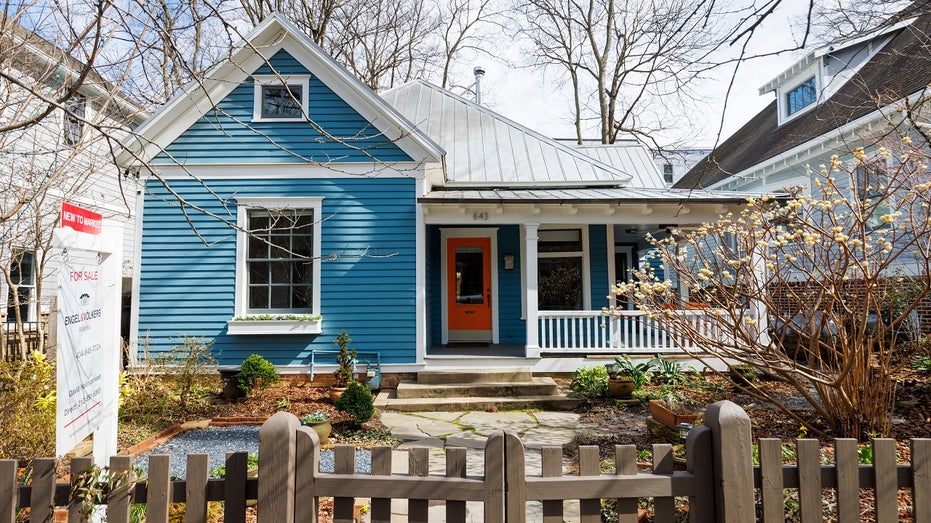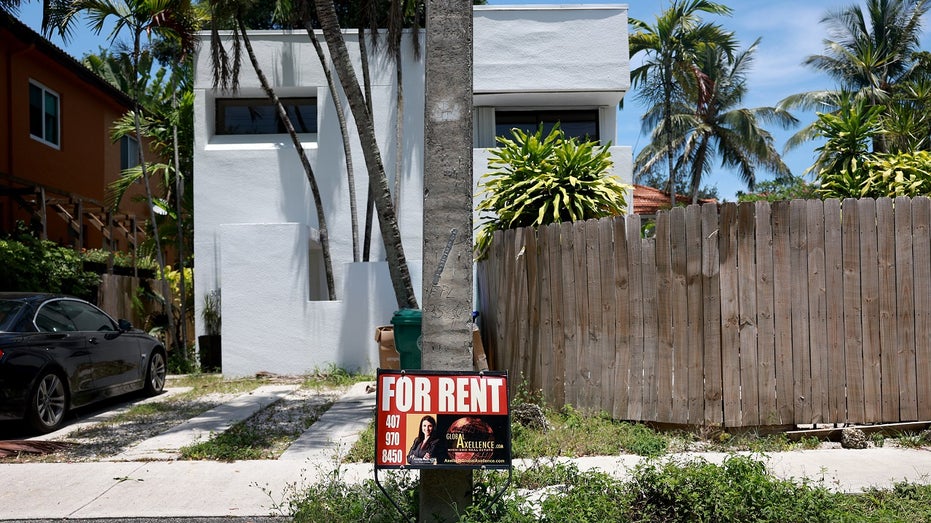US housing affordability at an all-time low
It's more difficult than ever to afford housing in the US
US housing market needs a break: Redfin CEO Glenn Kelman
Redfin CEO Glenn Kelman says its hard to fault the Fed for overdoing rate hikes when there are other persistent sources of inflation.
Global markets publication The Kobeissi Letter declared last week that housing affordability in America is now at an all-time low, pointing to several striking data points showing it is more expensive to pay for a place to live in the U.S. than ever.
For starters, the outlet said buying a house in the U.S. has become a luxury. It pointed to a Redfin report released Friday showing the median home mortgage payment in the U.S. hit $2,605 a month in July, up 19% from a year ago and the most expensive ever.

A "For Sale" sign outside a home in Atlanta, Georgia. The median mortgage payment in the U.S. is now the highest on record, and so is the asking rent price for a single-family home. (Dustin Chambers/Bloomberg via Getty Images / Getty Images)
Kobeissi reported there are now a record 31 states where homeowners pay a median monthly house payment above $2,000 per month, and Hawaii is now the first state in history with a median house payment above $5,000. Not far behind are Californians whose median mortgage bill is at $4,800, followed by Massachusetts homeowners who pay $4,000.
Thirty-seven states now require at least 30% of median annual income for new home payments in what the letter said "truly is an unprecedented market." In California, the median house payment requires a record 64% of median household income.
SEATTLE WOMAN OCCUPIES TREE SCHEDULED TO BE CUT DOWN FOR AFFORDABLE HOUSING UNITS
It's not just pricey to buy a home – renting one will also set Americans back more than ever before. The median asking rent for a single-family home just reached an all-time high of $1,900 a month.

A "for rent" sign in front of a home on July 12, 2023, in Miami, Florida. The median asking monthly rent for a single-family home in the U.S. is now $1,900. (Joe Raedle/Getty Images / Getty Images)
Adam Kobeissi, the letter's founder and editor-in-chief, noted to FOX Business that affordability is even lower than in housing crisis of 2008, but the market circumstances are much different today: this is primarily a supply issue, not necessarily demand.
Kobeissi says typically, in a market where interest rates rise as fast as they have under the Federal Reserve's ongoing rate-hike campaign that currently has the average for a 30-year mortgage around 7.1%, housing prices would be expected to pull back.
"This time around it's been the exact opposite, and it's not because of a lack of demand, but because of abundant demand – it's because of lack of supply," he said. "So basically, what it means for consumers is we don't think the housing market is going to have a substantial drought anytime soon."
WHITE HOUSE TARGETS ‘JUNK FEES’ AS RENT PRICES SOAR UNDER BIDEN ADMINISTRATION
Kobeissi said home prices may pull back 10% or 20% maximum at some point, but his analysts do not see an '08-style event happening, adding, "It's not the same setup, but it just means that the housing market is just going to stay stubborn for longer in our view."
One of the reasons supply is so limited, Kobeissi says, is that there are so many homeowners locked into sub-3% and sub-4% mortgage rates, so most people do not want to sell their homes and end up with a 7%-plus rate.

Homes under construction in Sacramento, California, on Monday, July 3, 2023. Some economists have expressed optimism that new construction could help ease the home inventory shortage in the U.S., but Kobeissi says prices for the home are still high. (David Paul Morris/Bloomberg via Getty Images / Getty Images)
When asked about reports that rising home construction could help ease the inventory shortage, Kobeissi said that might help, but the problem is new construction is still being sold at a hefty premium, too. He noted the cost of building materials remain historically high since their surge during the pandemic era.
GET FOX BUSINESS ON THE GO BY CLICKING HERE
He explained, "There are so many different things: low inventory, inflation, interest rates – those are all kind of working together in this situation."





















